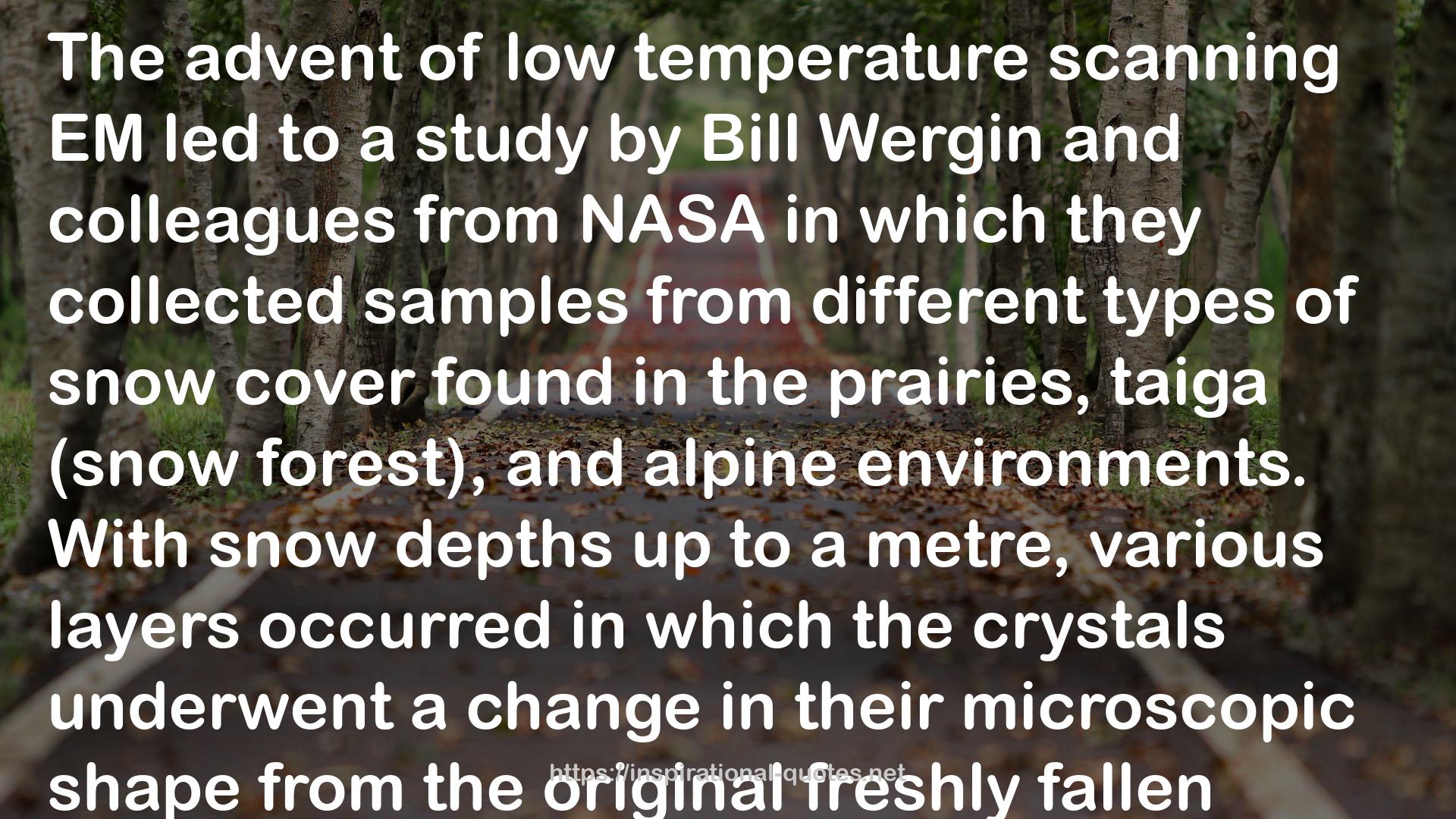" The advent of low temperature scanning EM led to a study by Bill Wergin and colleagues from NASA in which they collected samples from different types of snow cover found in the prairies, taiga (snow forest), and alpine environments. With snow depths up to a metre, various layers occurred in which the crystals underwent a change in their microscopic shape from the original freshly fallen crystals, to the development of flat faces and sharp edges. It is this metamorphosis of lying snow that determines the likelihood of avalanches, which can be predicted from the crystal structures at various depths. Although scanning EM (electron microscopy) is hardly available as a routine assay in distant mountain regions, this work helped in the use of microwave radiology investigation of the snow water equivalent in the snow pack, as large snow crystals scatter passive microwave more than small crystals. Smaller and more rounded crystals of snow do not interlock, and can slide more easily over each other, increasing the risk of avalanches. "
― , Microscopy: A Very Short Introduction
